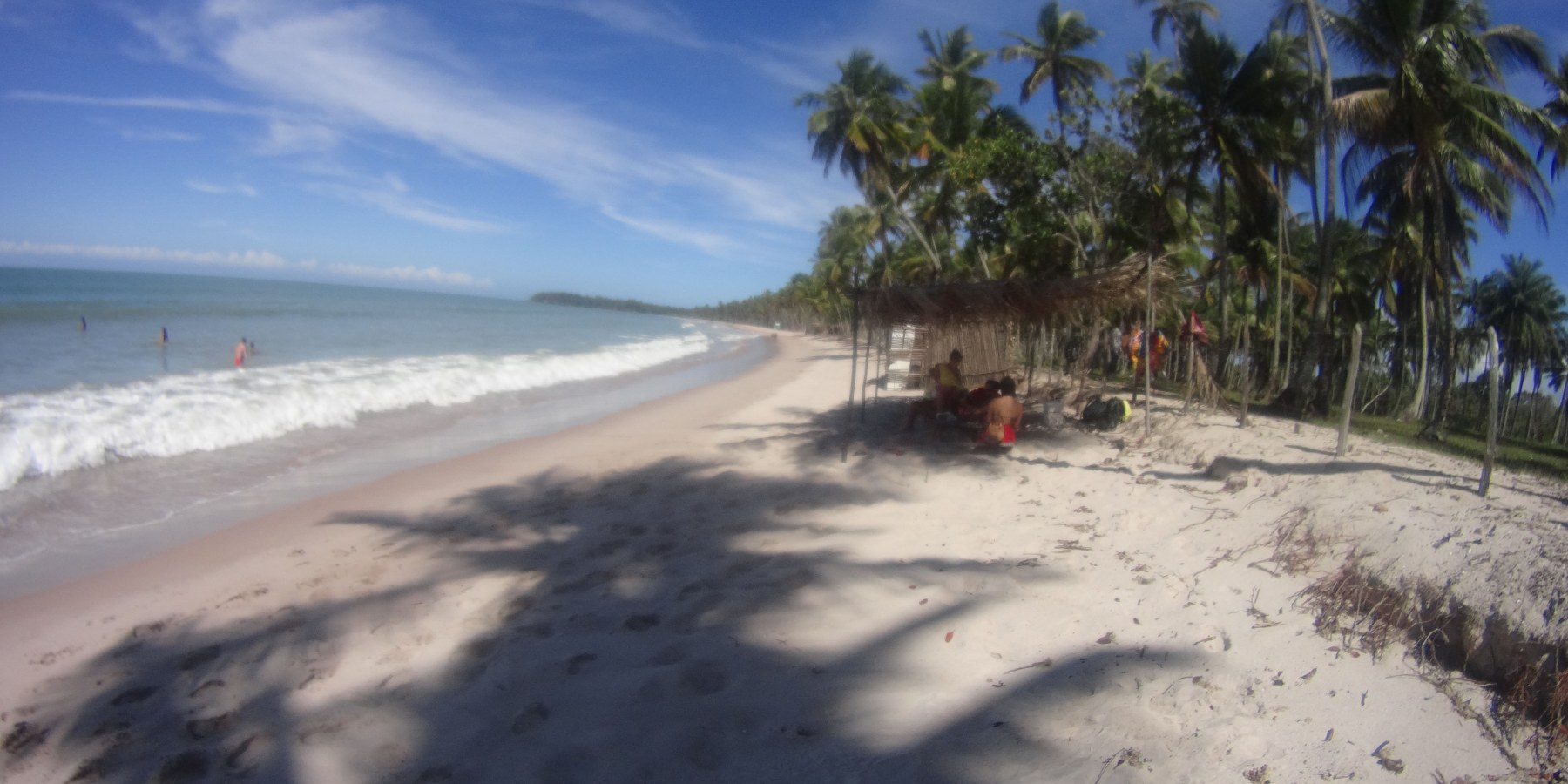
‘Morere’ is a small fishing village that is part of the ‘Boipeba’ island, a few hours from Salvador, traveling by car, with a boat crossing, or in small airplanes. The main destination of this island is actually the Old Boipeba, where most of the restaurants, hotels and residents are located. Alongside Morro de São Paulo, it is part of the ‘Tinharé’ archipelago, in the ‘Dende’ Coast.
In recent years, the peaceful village residents have observed the construction of comfortable hotel developments. And they opened their own kitchens and their boats to serve tourists. So you can eat and sleep well in Morere, as it leverages the inner city scenery: soft sand streets, colorful houses, a small school and a chapel.
In the vicinity of Morere, there are beaches with endless white sandy tracks. Virtually all are contoured by palm trees. They were planted by farmers decades ago, but today they seem native, so integrated into the landscape. The water is always warm. There are even freshwater streams that mingle with salty and generally calm beaches. River or sea bathing, it is up to you.
One of the main attractions is the tour in the swamp area. The old fishermen and crab collectors are now tourist guides as they have a vast knowledge about species and biome behaviour. The tour lasts over an hour navigating huge mangroves in canoes. While the small vessel passes through paths formed by high roots, white dots in their thousands hiding in the dark and dense mud. They are crabs of varying sizes and types, frightened by the strange presence.
Although Morere is ideal for those seeking to escape from the tourist turmoil, especially in the high season, you should set aside one day to visit the Old Boipeba, whose habitation began in the sixteenth century. There you can find a small church of the early seventeenth century built by the Jesuits; it is called the Church of the Holy Spirit. From the eighteenth century, it served as a ground for various crops such as cocoa and coffee. Although old, it managed to keep its rustic features, and today the island is recognized as a World Heritage Site by Unesco.
From Morere to Old Boipeba, you can arrive by boat or tractor. But the most interesting is to make the journey by foot. It takes about two hours and is performed by the edge of the sea, so the view and the warm water overshadow the walking time. The tide must be taken into consideration. The ideal is to get out in the morning, if not, there is a high risk of crossing the Oritibe river, between the beaches of Morere and Cueira, with water on your chest, or not even being able to cross it.
The paradise of Morere includes natural pools of transparent water full of fish, beaches lined with coconut palms and mangroves everywhere. There are almost twenty kilometres of blue waters, where the highlight attraction being the Ponta dos Castelhanos, south of Boipeba - famous for housing under the sea the remains of the Spanish ship Madre de Dios, which sank there in 1535.
The local cuisine is an attraction by itself. In Tupi language, Moreré means "discus", a famous fish in the region. Not by chance the few stalls and restaurants by the sea serve great food made of local delicacies and seafood, such as shrimp, octopus and lobsters. The big star of the island is the stew, present in all small home restaurants scattered across the sands of the small strip of sand. If hunger tightens, be sure to visit the ‘Mar e Coco’ restaurant and ask for a seafood ‘moqueca’ (stew) with plantain, a specialty of the island.

